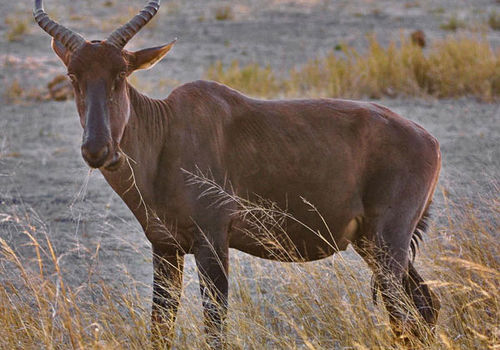
Tsessebe
Damaliscus lunatusTsessebe
Introduction: The tsessebe (Damaliscus lunatus) is a large antelope with a distinctive sloping back. The name comes from the Tswana language for the species. They are gregarious and small herds of females occupy a home range which overlaps the territory of the male. Both sexes carry short, ringed horns of around 34cm. Although rather ungainly in appearance, tsessebe are reputed to be the fastest of any antelope in southern Africa, sustaining a lumbering gallop for great distances, an advantage when being preyed upon by lion.
Distribution: found only in the Caprivi region of Namibia
Diet: Tsessebe are almost exclusively grazers and prefer tall grasses. They make heavier use of burnt areas and in Botswana, the Bushmen burn the veld annually for the specific purpose of attracting the species on to them, making their hunting easier. They are dependent on a regular supply of drinking water.
Colouring: The general colour of the body is dark reddish-brown with a distinct iridescent purplish-sheen, with a darker head and legs.
Breeding: Tsessebe are seasonal breeders and one calf is born at a time. The females make no attempt to hide their young and shortly after birth they join their mothers.
Size: Adult males stand about 1.2m at the shoulder and weigh around 140kg. Females are slightly smaller and are lighter at 126kg.
Klein Windhoek

